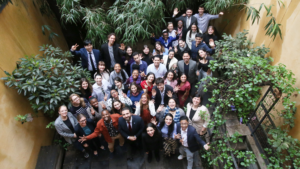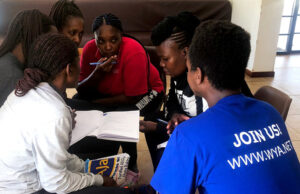 According to United Nations, many East Asian countries have experienced a decline in their Total Fertility Rates in the past 50 years. In the period of 1965-1970, the average family had five or more children. From 2005 to 2010, the average shifted to below 2.1 children per family.
According to United Nations, many East Asian countries have experienced a decline in their Total Fertility Rates in the past 50 years. In the period of 1965-1970, the average family had five or more children. From 2005 to 2010, the average shifted to below 2.1 children per family.
There are many factors behind the rapid fall of population growth. This is mainly due to delayed age of marriage. Other factors include brain drain, migration, and lack of food access, disease, and damages by natural disaster. In addition, sex selection is prevalent in some East Asian countries, giving more preference to boys than girls.
What is the impact of this sudden decline in population? Given the aging population and mismatch in replacement levels, productivity is expected to fall as more people require financial and medical support. The fall in birth rates will lead to a smaller workforce and lower tax base in the near future.
Let’s look at Japan as a case study for the effects of the decline of population. The US Population Reference Bureau indicated that Japan is reported to have experienced the fastest decline in population. According to local government officials, 2012 saw the sharpest decline in population due to low birth rates and an increasing number of deaths. 30 million of Japan’s population is 65 years or over – a staggering 24% of the population – while its population under 14 years is at record low of 13%.
Japan’s declining population is a concern for the country’s survival which prompted the Democratic Party of Japan to pursue different efforts to address the issue. One response was to propose a policy that provided cash allowances to children under high school age. These were to be given on a monthly basis to help families cope with child-rearing costs. This policy generated different reactions from opposing parties, but it indicates that rapid action is required to support the needs of families, and to create incentives and change the mindset of the younger population in favor of procreation and childbirth.
Furthermore, market structures will change both in East Asia and elsewhere. Looking at the Asia Pacific region as a whole, the economic stability enjoyed by China, Korea, India and Singapore in the past few years, has given support not just to their local businesses and domestic production, but also to trade and the growth of markets in nearby developing countries, such as the Philippines. To sustain this growth is not easy. In the next 20 years, new problems will arise, including the decline in human capital.
Looking at the Philippines as an example, thousands of job seekers leave the country to pursue careers within the region or in Western seas. There is no doubt that remittances make up a large portion of the economic pie, which, according to analysts, is one reason why the country was able to withstand the global financial crisis. However, this may also pose a threat to future generations. The problem here is not just a brain drain, but also a migration issue. Population replacement level in the Philippines is currently in a good state, but if emigration keeps increasing, there may be new issues to consider in the future and threats to population growth and family ties. Clearly, the youth of today is the most vulnerable age group as they carry with them the challenge of maintaining the region’s strong economic performance and rich culture.
Countries must find specific programs that could boost birthrate and workforce.
In the past decade, foreign immigrant policy in Singapore changed. By welcoming young professionals from around the world, the government was seeking ways to prevent the negative impact of the population decline at home. This however, did not receive positive responses from the local citizens.
The government of Singapore came up with some innovative policies to boost birthrate. From providing baby bonuses, to promoting dating networks and dating vouchers to even changing tax exemptions, they clearly sought to address the need to protect their country’s population growth. However, such policies came in late and are yet to show results. Policies of the past, when the government pushed to restrict family size, especially in lower-income families, are clearly out of date. The reverse is the talk of the town and the question Singapore is constantly asking is, unsurprisingly, how to boost birthrate. The same question haunts many East Asian countries.
If the new policies fail to make an impact to increase birth levels, the rather vibrant economy of Singapore will suffer and become unable to attract more foreigners. With greater number of older men and women, productivity rates will decline and health costs will continue to rise. With lower birth rates, the ability to support parents in the future will problematic.
Let’s move forward and move up! Population decline is more than just an economic issue. It is a concern for the protection of culture and humanity. Let’s learn from the mistakes of the past and push for projects that will address this issue, those that would pursue further support for person-centered policies. The human person is the greatest resource of any country. Let’s shift perspectives and support programs that celebrate life and promote the worth of each person, and his contribution to society.
Aside from pro-fertility programs, we need to show young people that they will be given proper support in pursuing their own dreams and plans for the family. Let’s enrich their potential and find ways to equip them in facing the challenges brought by the rapid decline for population growth. Their future and our countries’ future rely on the decisions made by young people today. Every decision counts. Every life matters. Let’s continue to celebrate the vibrancy and strength of Asian Youth!
Christine Violago, from the Philippines, is Director for Asia Pacific of World Youth Alliance, an international organization with consultative status with the United Nations and European Union, among other institutions.







